Our new ParaZapper™ UZI-3 is 8 zappers in one.
And it is the best choice if your are looking for real zapper effectiveness.
Please note: The UZI and the UZI-2 are obsolete and have been replaced by the UZI-3 from:huldaclarkparazapper.com

This site is being updated, Please use Hulda Clark ParaZapper
Please order your Hulda Clark ParaZapper from https://huldaclarkparazapper.comParaZapper™ UZI Specifications
ParaZapper UZI Review including chart and images
Super Strong Deluxe Zapper really kicks! Six zappers in one. 10.5 volt output.
Newer improved version, the UZI-3, with automatic cycling, and a total of 41 frequencies is now available
See also ParaZapper ™ CC2 with 29 frequencies in 6 modes
And ParaZapper ™ MY with 80 frequencies in 20 mode selections.
The UZI is Being discontinued soon as the UZI-3 is far better. To see more about the UZI-3, please click here.
The ParaZapper™ UZI is a microprocessor based multi-frequency zapper designed with improved results in consideration. This zapper includes the equivalent or better than all of the most popular zappers in one package at an affordable cost with a constant 10.6 volt ( +/- 0.25 V ) output without the risks associated with using a wall adapter. The output is strong and this unit is intended for those uses that need a stronger output as well as more numerous and more accurate frequencies. It also includes new innovations, such as pedestal offset, that offer significant enhancements over other zappers. One frequency alone does not provide the best overall coverage for multiple types of micro-organisms. Two frequencies can double the chance of hitting a particular organisms resonance, but even this does not provide the best coverage. For that reason, we have selected several Rife (Mode 1 and 4) frequencies along with 4 Hulda Clark Zapper frequencies (mode 2), Don Croft's ( no relationship ) Terminator Zapper (Mode 3) frequencies, Ultimate Zapper Mode ( actually far better than theirs ), and the 66.67 percent duty cycle mode. There is not any need to shop and compare any more. Get 6 different zappers in one with a total of 23 frequencies.
ParaZapper Customer comments
Why are multi frequencies important?
The basis of the zapper's operation is that it produces a fundemental frequency that produces many harmonics reaching high into the range between 100 kHz to 800 kHz. A harmonic is a frequency that is twice, three times, four times, or many times the base frequency. The square wave produced by zappers contains all of the odd harmonics ( 3 times, 5 times, 7 times the base frequency, etc., up to the frequency limit of the output device). This is the one real reason that there is not any single "one frequency" that works for everything. There are some better frequencies that appear to be better than others in producing a Clark spectrum but it actually takes over 40 base frequencies to get almost all of the microbes listed in the Clark frequency list. Even then, it should be noted that the Rife frequency list completely disagrees with the Clark frequencies. For this reason, we provide some of both of the Rife and Clark Frequencies.
The UZI is not a swept frequency zapper
The UZI provides very specific, accurate frequencies. We choose not to use swept frequencies because those zappers do not stay on any frequency long enough to be really effective. Certain specific frequencies are better for specific needs which is why we use those frequencies. The frequencies provided are held constant for sufficient time to have a lasting effect.
The UZI uses every bit of the power from your battery, but since we have a more powerful output, our batteries are not going to last hundreds of hours.
As an analogy, a 100 mpg automobile would be great, but it might not be able to climb a very steep hill.
What about high duty cycles that some claim are better?
The Duty Cycle is the ratio of the positive pulse of the output waveform to the low side of the waveform. A true square wave is 50 percent positive and 50 percent low. Anything else is actually a rectangular wave. While some sellers claim that having a duty cycle which is higher than 66 percent will produce both odd and even harmonics, this is a misguided interpretation and is completely false except for 1 specific setting ( 66.66666 percent duty cycle ). When the duty cycle is exactly 2 to 1, then there will be an exact set of frequencies that includes both the odd and some of the even harmonics but it should be noted that each will only be a part of full strength. Additionally, if the duty cycle is not just right, the frequencies can actually interfere with each other and actually reduce effectiveness. If you buy a unit with a high duty cycle, make sure that it is microprocessor based for accuracy because having the exact frequency and the exact duty cycle makes all the difference. Zappers that use a 555 series chip for timing are not accurate enough to guarantee the right results in each and every unit so it is hit or miss. For your testing purposes, we include both the 90 percent duty cycle ( Mode 5 ) and the 66.6 percent duty cycle ( Mode 6 ) in a high quality unit with microprocessor precision and accuracy. These modes are all in one unit for you to test and compare.
Important:
It is best to choose one of the units below that provides a 4 point contact system as it can almost double the effectiveness in some applications and it provides all over coverage rather than just point to point. Zapping this way provides 3 points positive and 1 point negative. It is the positive signal that is active.Warning:
This product is not intended for use with a power adaptor that connects to AC power, nor should any zapper. If you use one, it should be labeled as EN60601 rated if there is any chance of contact with humans, for other uses, a standard power supply will do, and should not exceed 9 volts output. A higher voltage may destroy the internal electronics of this unit. The current requirement is less than 50 milliamperes.Rechargale batteries
For those who have a concern about battery life, we offer special high charge, extended life fatteries and a charger to keep them powered.When observed under the microscope, the electrical current appears to explode almost all of the micro-organisms present.
For more information, see: zapper works video.
Visit us at ParaZapper Facebook page
| MODE | Frequencies | Duration |
| Mode 1 |
Rife 2.0 - 2.7 kHz range Freq 1 2280 +/- 6 Hz Most units are +/- 3Hz Freq 2 2128 +/- 6 Hz Most units are +/- 3Hz Freq 3 2489 +/- 7 Hz Most units are +/- 3Hz Freq 4 2000 +/- 6 Hz Most units are +/- 3Hz Freq 5 2127 +/- 6 Hz Most units are +/- 3Hz Freq 6 2720 +/- 7 Hz Most units are +/- 3Hz Freq 7 2170 +/- 6 Hz Most units are +/- 3Hz Freq 8 2008 +/- 6 Hz Most units are +/- 3Hz Stop and off 5 seconds, 3 - 1 second pulses and repeat Mode 1 will blink the Mode/Battery LED 1 Flash every 2 seconds Note: Use for 7.0 to 28 minutes on, 15-20 minutes off, repeat 3 times. Repeating 4 times will improve effectiveness. Note: Since each frequency lasts for 3.5 minutes, 7 minutes will only provide the first 2 frequencies. It takes 28 minutes to get all eight frequencies. Note that due to the accuracy of the microprocessor generated signal, most units are within 3 Hz of the specified frequency. |
3.5 min 3.5 min 3.5 min 3.5 min 3.5 min 3.5 min 3.5 min 3.5 min |
| Mode 2 |
Clark 30 kHz range Freq 1 27660 +/- 250 Hz Freq 2 29290 +/- 250 Hz Freq 3 30180 +/- 300 Hz Freq 4 31120 +/- 300 Hz Stop and off 5 seconds, 3 - 1 second pulses and repeat Mode 2 will blink the Mode/Battery LED 2 Flashes every 2 seconds Note: Use for 7 to 14 minutes on, 15-20 minutes off, repeat 3 times. Repeating 4 times will improve effectiveness. Note that due to the accuracy of the microprocessor generated signal, most units are within 50 Hz of the specified frequency. |
3.5 min 3.5 min 3.5 min 3.5 min |
| Mode 3 |
Croft Terminator range Freq 15.2 Hz +/- 0.2 Hz Stop and off 5 seconds, 3 - 1 second pulses and repeat Mode 3 will blink the Mode/Battery LED 3 Flashes every 2 seconds Note: Use for 7 minutes on, 15-20 minutes off, repeat 3 times. Repeating 4 times will improve effectiveness. Important Note: This is a very low frequency that will feel much stronger than the others if the electrodes come into contact with the body. The signal is actually not any stronger, it just feels stronger due to normal nerve physiology. However, due to this sensitivity, it is strongly advised to keep this frequency away from accidental contact with either the chest area near the heart, or the head area, including the jaws and neck and especially keep it away from the eyes. |
7.0 min |
| Mode 4 |
Rife 660-880 Hz range Freq 1 728 +/- 4 Hz Most units are +/- 2Hz Freq 2 787 +/- 5 Hz Most units are +/- 2Hz Freq 3 880 +/- 5 Hz Most units are +/- 2Hz Freq 4 800 +/- 5 Hz Most units are +/- 2Hz Freq 5 727 +/- 5 Hz Most units are +/- 2Hz Freq 6 660 +/- 5 Hz Most units are +/- 2Hz Freq 7 832 +/- 5 Hz Most units are +/- 2Hz Freq 8 780 +/- 5 Hz Most units are +/- 2Hz Stop and off 5 seconds, 3 - 1 second pulses and repeat Mode 4 will blink the Mode/Battery LED 4 Flashes every 2 seconds Note: Use for 7.0 to 28 minutes on, 15-20 minutes off, repeat 3 times. Repeating 4 times will improve effectiveness. Note: Since each frequency lasts for 3.5 minutes, 7 minutes will only provide the first 2 frequencies. It takes 28 minutes to get all eight frequencies. Note that due to the accuracy of the microprocessor generated signal, most units are within 1 or 2 Hz of the specified frequency. |
3.5 min 3.5 min 3.5 min 3.5 min 3.5 min 3.5 min 3.5 min 3.5 min |
| Mode 5 |
Better than and Beyond the Ultimate Zapper Mode Even though we do not think much of the ultimate zapper, we offer this mode for those who feel that they must have it. Freq 2020 Hz +/- 0.6 percent at 90 percent duty cycle Stop and off 5 seconds, 3 - 1 second pulses and repeat Mode 5 will blink the Mode/Battery LED 1 Long Flash every 2 seconds Note: Use for 7 minutes on, 15-20 minutes off, repeat 3 times. Repeating 4 times will improve effectiveness. |
7.0 min |
| Mode 6 |
66.6 percent duty cycle Mode Freq 2020 Hz +/- 0.6 percent at 66.67 percent duty cycle high, 33.33 percent low Stop and off 5 seconds, 3 - 1 second pulses and repeat Mode 5 will blink the Mode/Battery LED 1 quick Flash every second Note: Use for 7 minutes on, 15-20 minutes off, repeat 3 times. Repeating 4 times will improve effectiveness. |
7.0 min |
|
Note: The frequencies in this unit are far more accurate than the frequencies in Rife units that select the frequency using a dial, unless a digital readout is used. |
Our ParaZapper™ reliability
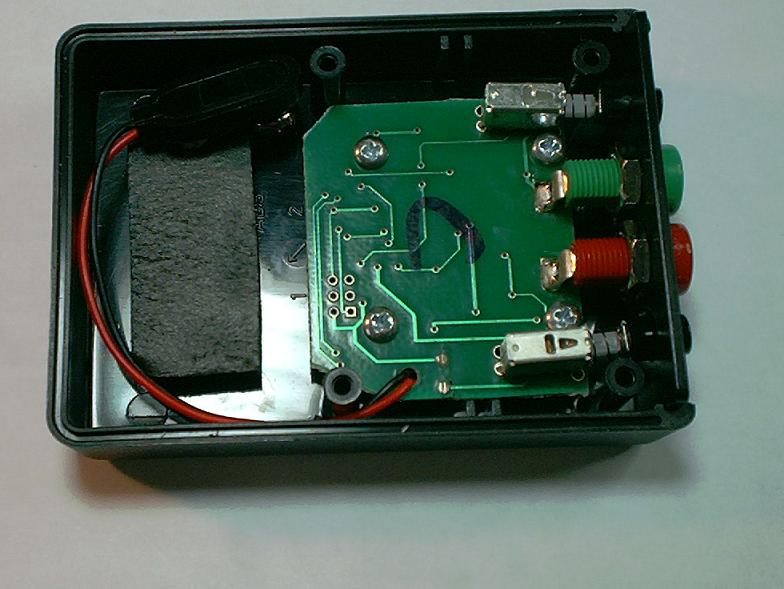
|
ParaZapper™ As you can see from this picture, ParaZapper is securely attached inside of the durable plastic case with 4 screws. The switches and connectors are also securely soldered to the circuit board. Sorry, but cheap switches, hand wiring that can easily break, hobby level resistors, and unmounted circuit boards do not represent quality in any context, especially when compared to our high quality boards and components. The ParaZapper UZI has over 50 components on the circuit board, some of them costing almost as much as the entire set of parts that go into the so called Ultimate Zapper. |
|
|
|
|
|
ParaZapper UZI ircuit board
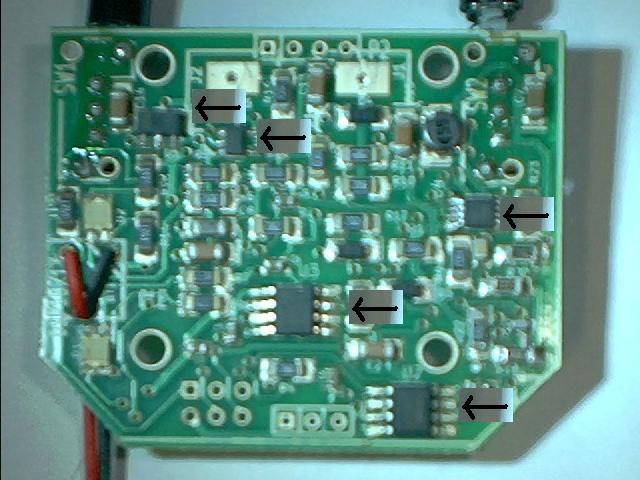
|
||
|
|
|
|
|
Technical |
||
|
UZI has Positive offset |
||
When the unloaded signal from the ParaZapper UZI is observed on the oscilloscope, it looks as it is supposed to. Notice that the bottom of the signal is well above the base line. This elevation is the result of Pedestal Offset and is much better than the 1/4 volt positive offset that Dr. Hulda Clark recommends. It is technically superior and more reliable to prevent negative spikes.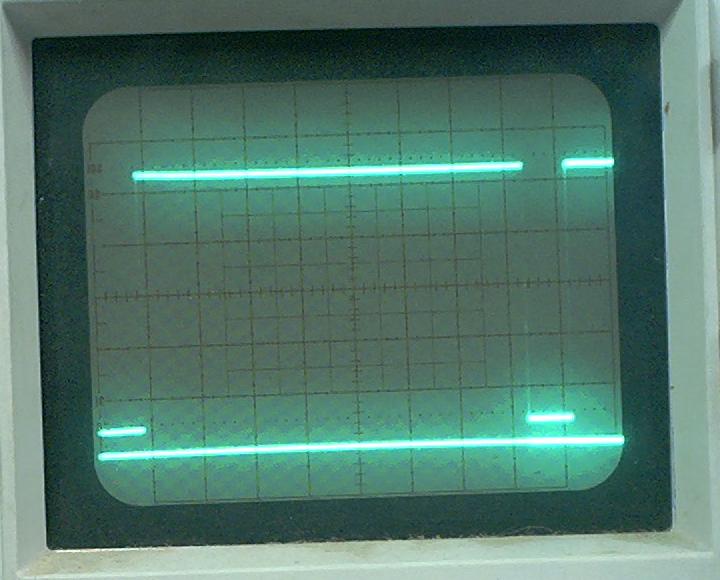
|
||
|
UZI has True Square Wave |
||
When the signal from the ParaZapper UZI in Mode 1,2,3, or 4 is observed on the oscilloscope, it looks as it is supposed to. It is a True Square Wave. A Square wave technically means that all sides are equal. Also, notice that the bottom of the signal is well above the base line. This elevation is the result of Pedestal Offset and is much better than the 1/4 volt positive offset that Dr. Hulda Clark recommends. It is technically superior and more reliable to prevent negative spikes.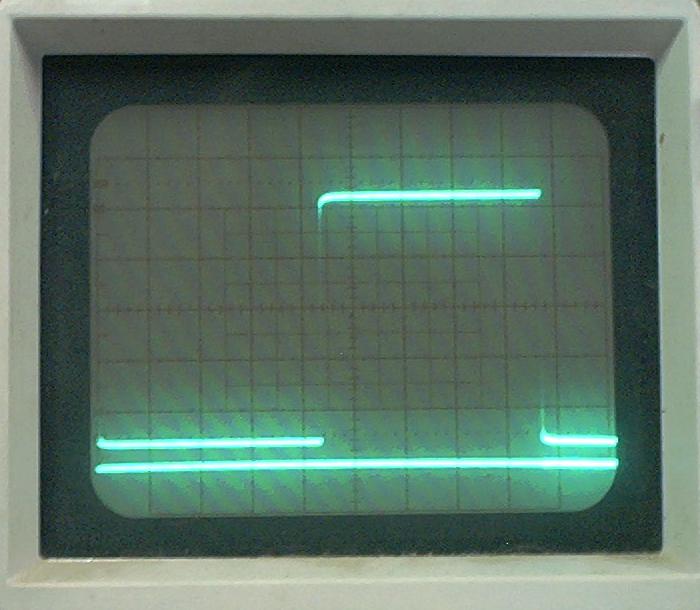
|
||
|
UZI produces No negative spikes under load |
||
When the loaded signal from the ParaZapper UZI, using a human body as a load, is observed on the oscilloscope, the story is told. The waveform Does Not dip even the slightest bit negative and meets Dr. Clark's statement "Not even a single spike on negative side, because you sustain pathogen life". According to the image, the claim of 100 percent positive output is obviously completely True with the ParaZapper UZI.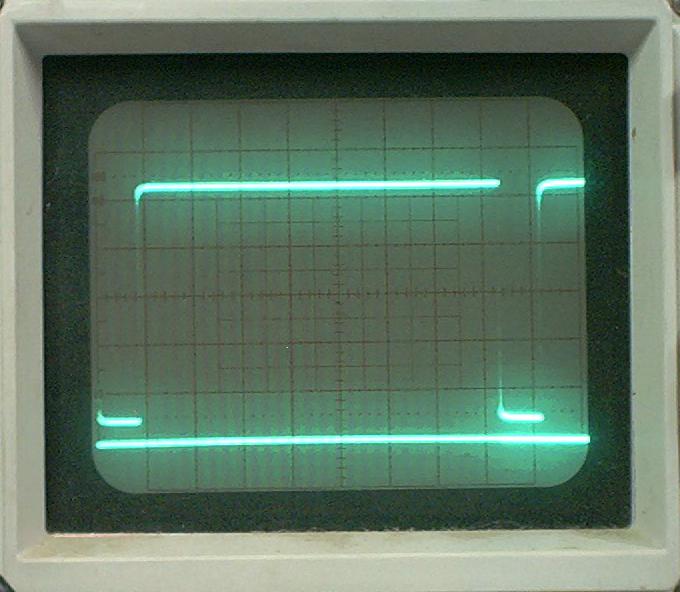
|
||
|
UZI Accuracy |
||
|
With ParaZapper UZI, in Mode 5, due to the precision signal from the microprocessor, you get the same frequency 2020 Hz plus or minus 5 Hz every time. You know that you are getting almost exactly the same as everyone else, not some hit or miss frequency. 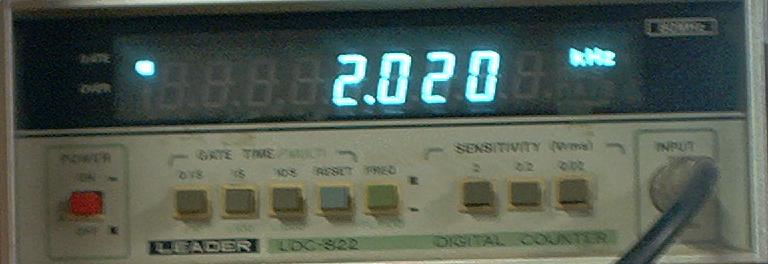
|
||
The UZI-2 offers automatic power down during delay times so that it can be used for continuous zapping or it can be used for repetitive cycles with a 20 minute rest phase between each. While the UZI also has two automatic timing modes and recycling for each frequency range, it does not feature an automatic shutdown so that it can be used for continuous zapping or it can be used for repetitive cycles with a 20 minute rest phase between each but continues to use up the battery. Power to the unit is supplied either by an alkaline 9-volt battery or a true 9 volt rechargeable battery and is controlled by a push-on / push-off switch. Frequency and mode selection are by momentary contact push button switch. To change modes, simply press the mode switch. The battery and mode LED's will both come on at the same time. Release the switch and the next mode will start. To change to the next mode, simply press the [Mode] switch again.
To use the Automatic Cycle mode ( Not recommended for UZI as the battery continues to drain) where the unit times the frequencies, inserts a 20 minute rest phase, and then repeats the same frequency selection again, press and hold the Mode button while turning the unit on. The Battery/Mode LED will show continuous RED. Release the button and the unit will start in mode one. To change to the next mode, press the Mode button again and the next frequency mode will start.